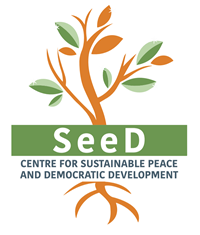SCORE Armenia
SCORE Armenia
The SCORE in Armenia is implemented by USAID/OTI in partnership with SeeD. SCORE is a robust scientific assessment tool that is carefully calibrated to each context to investigate societal dynamics and guide evidence-based policy and programme design for enhancing social cohesion. For a more detailed explanation of SCORE methodology, please read the short methodology paper here.
SCORE Armenia pilot study was conducted between May – August 2019 with a representative sample of 700 citizens covering all geographic regions of the country. The data collection was conducted in collaboration with the Armenian Sociological Association (ASA). SCORE Armenia aims to understand the socio-political opinions of Armenians, their policy expectations, civic attitudes and psychosocial assets. Within this context, the areas of investigation that guide the SCORE Armenia polit study are:
1. Public confidence in the government institutions and policy priorities process among different geographic and demographic groups;
2. Drivers of support and scepticism towards the reform process;
3. Perceptions of different groups towards international and regional actors (e.g. EU, Russia, OSCE, UN);
4. Perceptions of and tolerance to corruption;
5. Constructive citizenship and civic attitudes of youth;
6. Perceptions and preferences of different groups with regards to the conflict with Nagorno-Karabakh;
7. Inter-group relations and social tolerance.
The indicators of the SCORE Armenia pilot study as well as the relationships between them can be explored and disaggregated an interactively on this platform. For information on how to use the platform, you can watch the short video on our Facebook page here or read the How to Read SCORE manual here.
For a more detailed explanation of SCORE methodology, please read the short methodology paper here, explore the publications page here or read the general methodology page here. For information on how to use the platform, you can watch the short video on our Facebook page here or read the How to Read SCORE manual here.
SCORE Vocabulary
Dimensions are thematic categories that organise the different indicators on the platform. You can investigate multiple indicators organised under six different dimensions.
Indicators measure a particular phenomenon (e.g. economic security, active citizenship, level of education, tolerance to corruption etc.) and the definition of the indicator can be found under the glossary search box. Indicators are usually assessed with minimum 3 questionnaire items and scaled following statistical reliability tests to ensure that the different dynamics underlying the indicator is well-captured. A score from 0 to 10 is calculated for each indicator. 0 means the phenomenon the indicator is measuring is not observed in the context at all, and 10 means that it is observed strongly and prevalently. For example, if we want to denote the extent to which people feel safe from violence in daily life, a score of 0 would mean that no one feels secure, while 10 would signify that every person feels secure.
Heatmaps show how indicators are represented across different geographical areas, illustrating regional differences to identify areas of concern or priority to tailor policies and programmes and to improve resource allocation more precisely.
Path Analyses (Models) represent relations between different indicators based on advanced statistical analysis including regression, network analysis and structural equation modelling. In models, the relationships are directional, and they should be read from left to right. They have predictive power, and are used to identify key drivers of desired changes in society. Models reveal what influences an indicator or what this indicator influences itself. When an indicator is part of a model, we call them ‘drivers’, as they drive (positively or negatively) other indicators they are linked to. In a model, the indicator that all the drivers are influencing and predicting is called an ‘outcome’. Outcomes are at the right end of the model, and they are usually our end goals that we want to influence in the long term. We run models to understand how best to create positive change on an outcome, such as constructive citizenship or migration tendency. Red connecting lines in models represent a negative relationship and blue connecting lines represent a positive relationship between indicators. Thicker the arrows, stronger the relationship between the indicators. Models should not be confused with correlations, where lines represent associations but they are not directional.
